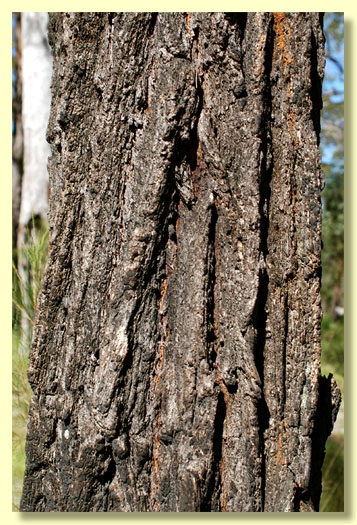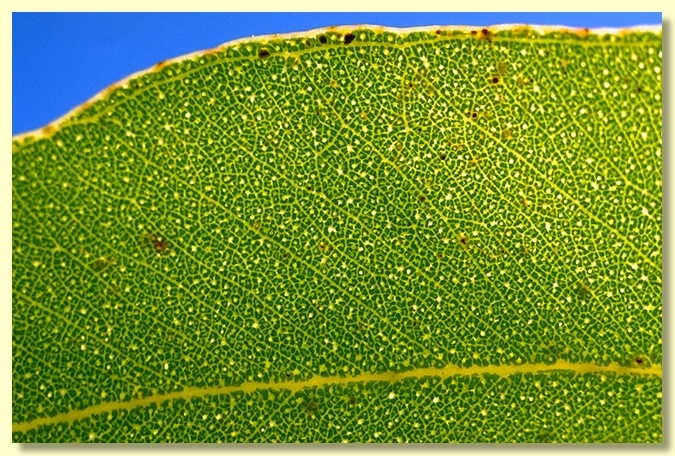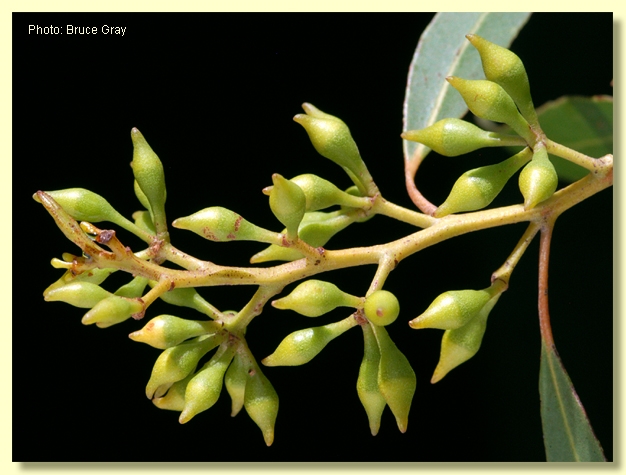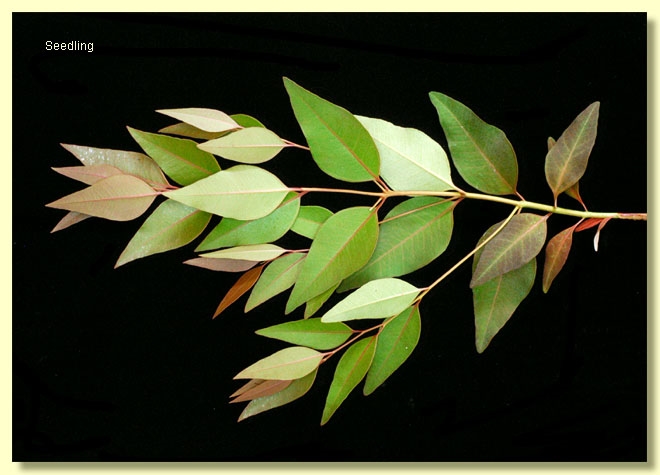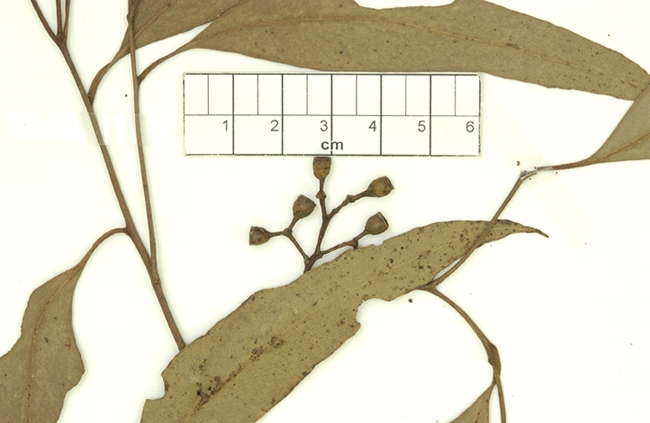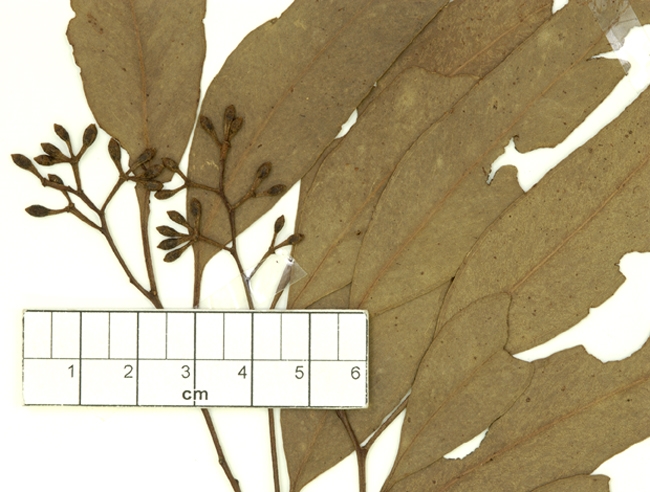Euclid - Online edition
Eucalyptus granitica
Eucalyptus | Symphyomyrtus | Adnataria | Apicales | Siderophloiae | Subglaucae
Tree to 20 m tall. Forming a lignotuber.
Ironbark to small branches, dark grey or black.
Juvenile growth (coppice or field seedlings to 50 cm): stem square in cross-section; juvenile leaves opposite for a few pairs, then alternate, sessile to shortly petiolate, lanceolate, 6–11 cm long, 1.4–2 cm wide, glossy green.
Adult leaves alternate, petiole 1–2 cm long; lanceolate to broadly lanceolate to falcate, 7–15 cm long, 1.3–3.2 cm wide, base tapering to petiole, concolorous to slightly discolorous, glossy, green, side-veins at an acute angle to midrib, densely to very densely reticulate, intramarginal vein parallel to and just within margin, oil glands mostly intersectional.
Inflorescence terminal compound or axillary compound, peduncles 0.3–1.1 cm long, buds 7 per umbel, pedicels 0.2–0.4 cm long. Mature buds obovoid to ovoid, 0.4–0.6 cm long, 0.3 cm wide, smooth, scar present, operculum conical to rounded or slightly beaked, stamens usually irregularly flexed, anthers adnate, cuboid, dehiscing by broad lateral pores or slits, style long, stigma blunt, locules 3 or 4, the placentae each with 4 vertical ovule rows. Flowers white.
Fruit on pedicels 0.1–0.5 cm long, cup-shaped to barrel-shaped, 0.4–0.6 cm long, 0.3–0.6 cm wide, disc descending, valves 3 or 4, near rim level or enclosed.
Seeds brown, 0.8–1.5 mm long, ovoid or flattened-ovoid, dorsal surface shallowly pitted, hilum ventral.
Cultivated seedlings (measured at ca node 10): cotyledons reniform; stems square in cross-section; leaves always petiolate, opposite for 4–6 nodes then alternate, ovate to lanceolate, 6.3–9 cm long, 1.8–3 cm wide, base tapering, apex finely pointed, dull to ca node 5 then green, very glossy, discolorous.
Flowering has been recorded in February, April, July, August, September and December.
A medium-sized to tall ironbark tree restricted to parts of the Atherton Tableland and a few areas just to the south. It normally grows in granite soils from the Herberton Range, Tinaroo Hills and Tumoulin State Forest west of Ravenshoe, to just west of Paluma and just south-west of Townsville. Characterised by its glossy green adult and juvenile leaves.
Within its subgroup, E. granitica is probably closest to E. crebra and is weakly separated from this species by its glossy adult leaves (usually dull in E. crebra). In fact all species from this group normally have dull green to glaucous adult leaves. On occasions however, E. siderophloia, E. rhombica, E. quadricostata, E. ophitica, E. taurina and E. exilipes can have glossy to sub-glossy adult leaves. E. siderophloia and E. rhombica have diamond-shaped buds, E. quadricostata has buds and fruit square in cross-section, E. ophitica and E. taurina have more or less oblong buds with a blunt operculum and E. exilipes has buds with a long narrow acute operculum and linear juvenile leaves.
Within its area of occurrence, E. granitica should not be confused with any other ironbark species.
MORE ABOUT IRONBARKS
Eucalyptus graniticus: Latin graniticus - referring to the substrate, granite, on which this species is most commonly found.


